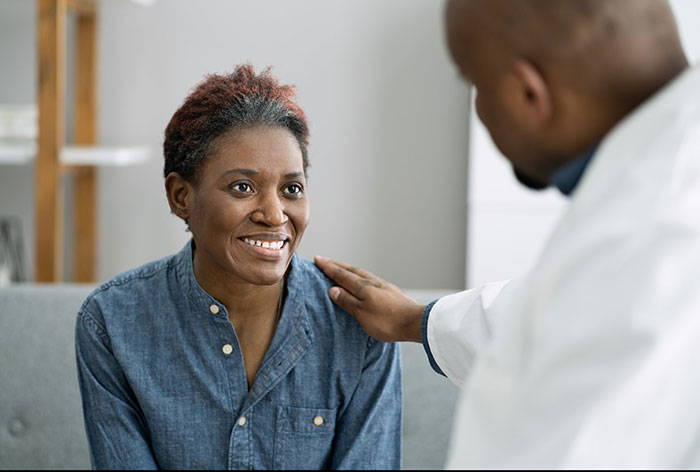Learn About Breast Cancer
Talk to Your Doctor
1. All women are at risk for breast cancer. The risk increases as you age.
2. 1 in 8 women will be affected by breast cancer in their lifetime.
3. Not all breast lumps are breast cancer. 80 to 85 percent of breast lumps are benign, noncancerous, especially in women younger than age 40.
4. Black/African American women under the age of 40 can have tumors that are more aggressive and require early detection, frequent breast cancer screenings and aggressive medical treatment to increase chances of survival.
5. Rare cases of breast cancer have been found in girls as young as age 15.
6. Inform your doctor or nurse if you or your relatives have a family history of breast cancer or cancer.
7. Elderly women may be less aware of breast cancer risk factors and delay seeking medical attention. This delay may result in more advanced disease.
8. Because of the biological and racial differences in breast cancer mortality, research studies have concluded that early and frequent breast cancer screenings are essential to increasing the survival advantages for black women.
9. Breast cancer is a leading cause of cancer death among black women.
10. Do a regular self-exam, checking for any unusual changes such as:
- Changes and lumps on the inside or outside of your breasts, chest, pectoral muscles, collarbone, nipples, torso, or underarms.
- Strange discharge or fluid from the nipples that is bloody, clear, or pus-like that smells foul.
- Skin changes that are bumpy, dark, different color, itchy, painful, puckered, rash-like, redness, and sores, ulcers, shrunken, swollen, or tender.
11. Men can also develop breast cancer. The signs and symptoms are the same as those for women.
12. In 2022, an estimated 287,850 new cases of invasive breast cancer are expected to be diagnosed in women in the U.S., along with 51,400 new cases of non-invasive breast cancer.
13. Fortunately, survival rates are increasing due to improved breast cancer detection, as well as advances in breast cancer treatments.

